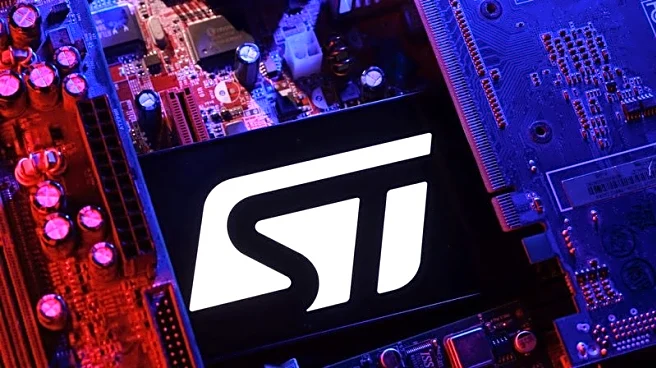What's Happening?
STMicroelectronics has released its financial results for the third quarter of 2025, reporting net revenues of $3.19 billion and a gross margin of 33.2%. The company experienced a slight decrease in net revenues compared
to the previous year, but sequential growth was noted. The operating income for the quarter was $180 million, with net income reaching $237 million. STMicroelectronics has provided guidance for the fourth quarter, expecting net revenues to increase to $3.28 billion and a gross margin of approximately 35%. The company is also in the process of acquiring NXP's MEMS sensor business, a transaction expected to close in the first half of 2026.
Why It's Important?
The financial results and future guidance from STMicroelectronics are significant as they reflect a recovery in the semiconductor market, which is crucial for various industries reliant on electronic components. The anticipated growth in revenues and gross margin suggests improved market conditions and operational efficiency. The acquisition of NXP's MEMS sensor business could enhance STMicroelectronics' product offerings and market position, potentially leading to increased competitiveness and innovation in the semiconductor sector. This development is likely to impact stakeholders, including investors, customers, and industry partners, by providing opportunities for growth and collaboration.
What's Next?
STMicroelectronics plans to continue optimizing its investments and reshaping its manufacturing footprint to adapt to current market conditions. The company aims to accelerate innovation and strengthen free cash flow generation. The acquisition of NXP's MEMS sensor business is expected to be completed in the first half of 2026, pending regulatory approvals. STMicroelectronics will conduct a conference call to discuss its financial results and business outlook, providing further insights into its strategic priorities and market expectations.
Beyond the Headlines
The ongoing adjustments in STMicroelectronics' segment reporting and strategic acquisitions highlight the company's efforts to streamline operations and enhance its competitive edge. These changes may lead to long-term benefits, such as improved resource allocation and synergies across product lines. Additionally, the company's focus on sustainability and carbon neutrality by 2027 reflects broader industry trends towards environmental responsibility, which could influence consumer preferences and regulatory policies.












